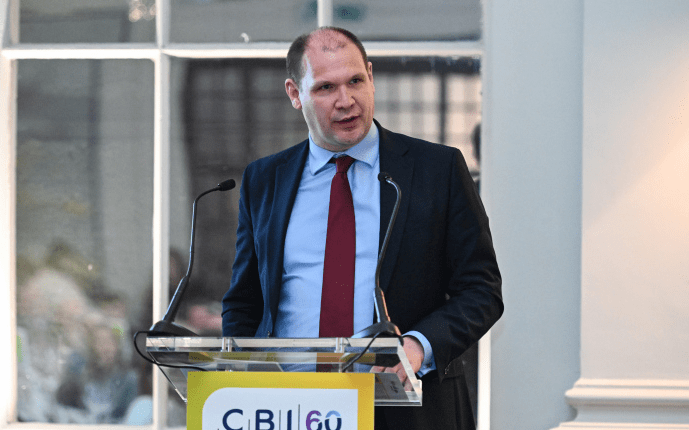Energy giant SSE has announced the appointment of Martin Pibworth as its next Chief Executive, with the transition set to take place following the company’s Annual General Meeting on 17 July.
SSE plc, one of the UK’s leading energy companies, is at the forefront of the country’s transition to a low-carbon future. With a heritage rooted in public sector electricity boards and a present defined by record-breaking renewable energy projects, SSE plays a pivotal role in securing Britain’s energy needs while helping the nation meet its net-zero targets.
The current CEO, Alistair Phillips-Davies, will retire later this year, stepping down from the board before his official departure in November. Phillips-Davies, who has led SSE through a transformative period in the energy sector, will pass the reins to Pibworth, a long-serving executive within the company.
Martin Pibworth brings extensive experience to the top role, having joined SSE in 1998. Over the past three decades, he has held several senior commercial positions and has been a member of the company’s executive committee since 2012. He was appointed to the SSE board in 2017.
Outside of SSE, he was recently appointed as chair of CBI Scotland and is a longstanding Energy UK board member.
“As an integrated electricity group focused on the energy transition, we are well-placed for long-term growth from our established positions in networks, renewables and flexibility. In our highly dynamic operating environment, we have the capabilities and portfolio to manage complexity and volatility, whilst pivoting towards value as it emerges,” he commented.
“I look forward to continuing to work with governments, shareholders and other stakeholders on powering society’s needs whilst creating sustainable value as we electrify the economy,” he added.
Under the new appointment:
- Base salary: £970,000 per annum
- From 1 April 2026: Salary will rise to £1,050,000
Pibworth steps into the role at a crucial juncture as SSE delivers a £20.5 billion capital investment programme aimed at transforming the UK’s energy infrastructure.
Major Projects to Drive UK’s Green Energy Goals
SSE’s ongoing investment strategy includes several flagship initiatives aligned with the UK Government’s ambition to eliminate carbon emissions from the power grid by 2030. Key projects include:
- Shetland Onshore Wind Farm: Connecting to the UK grid to enhance renewable capacity.
- £4.3 Billion Subsea Transmission Cable: Linking Peterhead in Scotland with the Yorkshire coast to bolster grid resilience and energy transfer.
Additionally, SSE is playing a central role in developing Dogger Bank, the world’s largest offshore wind farm. The 3.6 gigawatt project is expected to deliver its first operational phase by the second half of 2025.
The leadership transition comes as SSE reinforces its commitment to clean energy and infrastructure development. With Martin Pibworth at the helm, the company is poised to continue its contribution to the UK’s journey towards net-zero emissions.
This marks yet another high-profile leadership change in the UK energy and housing sectors, following recent news that Bield appointed Debbie Collins as its new Chief Executive, as organisations across the country strengthen their leadership to meet modern challenges.
A Brief History of SSE
SSE was formed in 1998 through the merger of Scottish Hydro-Electric and Southern Electric, two former state-owned electricity providers that became private entities following the energy market privatisation in the 1990s.
The newly merged company was originally known as Scottish and Southern Energy, before rebranding as SSE plc in 2010 to reflect its broader UK focus.
Over the years, SSE has evolved from a traditional utility provider into a renewables-led energy infrastructure company, divesting from domestic retail energy supply in 2020 when it sold its retail arm to OVO Energy.
SSE’s Core Business Operations
Today, SSE focuses on the following key areas:
- Renewable energy generation: Particularly in wind and hydro power
- Electricity transmission and distribution
- Flexible thermal generation and energy storage
- Electricity network services and grid solutions
Its operations are primarily in the UK and Ireland, with some growing presence in continental Europe through strategic partnerships.
Major Ongoing Projects
SSE is investing heavily in infrastructure to support a low-carbon energy system. It currently has a £20.5 billion capital investment plan running to 2027, with several high-profile projects:
1. Dogger Bank Wind Farm
- Status: Under construction
- Capacity: 3.6 GW
- Details: Located in the North Sea, Dogger Bank will be the world’s largest offshore wind farm upon completion.
- Expected completion: Phase one by late 2025
2. Shetland Clean Energy Hub
- Scope: Connecting Shetland’s onshore wind farms to the UK national grid
- Significance: Provides enhanced grid stability and access to renewable energy from remote regions
3. Eastern Green Link 1
- Type: Subsea electricity transmission cable
- Route: From Peterhead in Scotland to the Yorkshire coast
- Value: £4.3 billion
- Purpose: To improve power flow between Scotland’s renewables-rich north and the energy-demanding south
4. Hydro-electric Storage Expansion
- SSE is seeking planning approval to develop new pumped storage hydro schemes to provide flexibility and storage for the renewable grid.
Financial Overview
As of the latest reports (FY 2023–24), SSE maintains a strong financial position:
| Metric | Value |
|---|---|
| Market Capitalisation | Approx. £17–18 billion |
| Group Revenue | Over £8 billion |
| Adjusted Operating Profit | ~£2.2 billion |
| Investment Commitment | £20.5 billion (by 2027) |
SSE is listed on the London Stock Exchange (LSE) and is part of the FTSE 100 index, underlining its importance to the UK economy and investment landscape.






